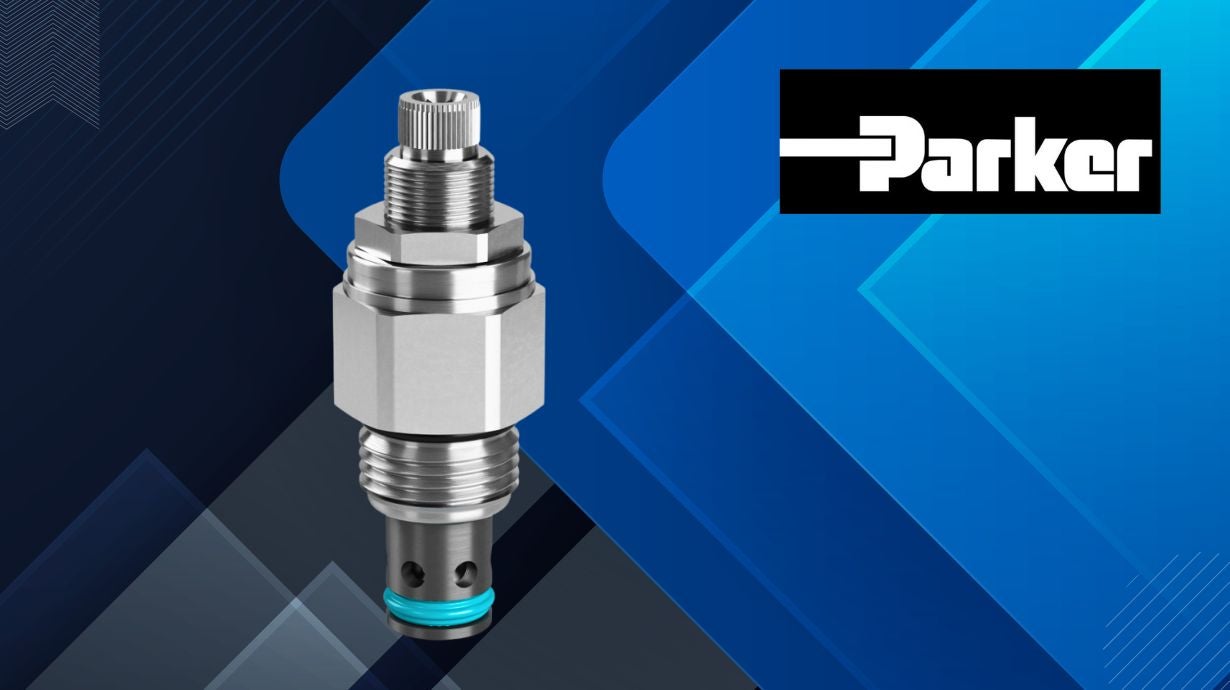Guide to Setting Parker Pressure Relief Valves

Pressure relief valves (PRVs) can be found in countless industrial systems. These valves are designed to automatically release excess pressure from a system when it surpasses a predetermined safe limit. This prevents potential equipment damage, system failures, and other hazards.
For anyone working with hydraulic applications, properly setting and maintaining your PRVs is essential for:
Safety: An incorrectly set PRV might fail to open when needed, leading to catastrophic system failures and serious safety risks.
Regulatory Compliance: Many industries operate under strict regulations that mandate the precise setting and consistent maintenance of PRVs. Adhering to these is non-negotiable.
Equipment Longevity: A well-calibrated and maintained PRV protects your valuable equipment from damage caused by overpressure, significantly extending its operational life.
The process of setting a pressure relief valve requires attention to detail. Here are the key steps to setting up your PRV:
1. Understand Your System's Requirements - Before you even touch a valve, you need to thoroughly understand the system it will protect. Consider these factors:
Maximum Allowable Working Pressure (MAWP): What is the absolute highest pressure your equipment can safely handle? Your PRV must be set to operate effectively within this limit.
Process Conditions: Consider operating temperature, filtration needs, and the type of fluid in your system, as these can all influence your valve's performance.
2. Pressure Relief Valve Selection - Parker Hannifin offers a range of PRV options, and Triad Technologies can help you find the perfect fit for your application. Key considerations include:
Valve Type: Parker offers various types, including direct-acting, differential area, and pilot-operated valves. Select the one best suited for your specific application's requirements.
Pressure Range: Every valve has a specified maximum and minimum pressure setting. Ensure the valve you choose can meet your system's required pressure range.
Material Compatibility: Verify that the valve's materials are compatible with the fluids and operating conditions of your application to prevent corrosion or degradation.
3. Installation - Proper installation is crucial for effective PRV operation:
Port: Make sure the inlet and outlet piping are correctly sized and configured to minimize pressure drop and turbulence. Always double-check the port functions for the specific PRV model you're installing to ensure the high-pressure line connects to the "Pressure" port.
Torque: Torque the fastening bolts (or cartridge) of the relief valve to the manufacturer's specified requirements. You can find this essential information in Parker's catalogs, such as MSG15-3504.
4. Adjust Your PRV to open at the desired pressure:
Use a Calibration Tool: Always use a calibrated pressure gauge to accurately measure the pressure during the setting process. Precision is key here.
Adjust Spring Tension: Most PRVs feature an adjustable spring tension mechanism. You'll increase or decrease this tension to achieve your desired opening pressure. Generally, rotating clockwise increases the pressure setting, while counterclockwise decreases it. Always refer to Parker's documentation for the specific rotation direction for your valve model.
Test the Valve: After making adjustments, conduct a test to confirm the valve opens at the correct pressure. This typically involves gradually applying pressure and observing the valve's response. Parker outlines two primary methods for testing your pressure relief valve:
Static Test Method (Most Common)
Connect a Pressure Gauge: Attach a calibrated pressure gauge to the valve’s inlet or test port. Ensure the gauge can accurately measure the pressure range you're working with.
Apply Pressure: Gradually increase the system pressure using a pump or other controlled means, carefully monitoring the pressure on your gauge.
Observe Valve Operation: As the pressure nears the PRV's set point, watch the valve closely. It should begin to open at the specified set pressure.
Record Opening Pressure: Note the exact pressure at which the valve begins to open. This is your actual set pressure and should fall within Parker's specifications. Important: Cycle the pump pressure on and off three times to verify the setting.
Check for Full Opening: Continue to slightly increase the pressure to ensure the valve fully opens and releases fluid as designed.
Return to Normal Conditions: Once testing is complete, always relieve any trapped pressure before disconnecting hoses, fittings, or components.
Dynamic Test Method - This method involves testing the PRV under actual operating conditions:
Perform a Functional Test: If your system allows, operate the equipment normally and monitor the PRV’s response to typical pressure fluctuations.
Observe Performance: Confirm that the valve opens at the appropriate pressure during normal operation and reliably closes once the pressure drops.
5. Perform Regular Maintenance and Testing - Setting a PRV is just the beginning. Ongoing maintenance ensures its continued reliability and safety:
Routine Inspections: Regularly inspect your PRV for any signs of wear, corrosion, or leakage. Early detection can prevent major issues.
Functional Testing: Periodically test the valve to confirm it still opens at the correct pressure. This can be done using pressure testing or a dedicated test bench.
Documentation: Maintain detailed records of the setting process, all maintenance activities, and test results. This documentation is crucial for compliance and future reference.
Setting a pressure relief valve is a vital task that demands careful consideration and precision. By understanding your system's requirements, selecting the appropriate Parker valve, and following proper installation and maintenance procedures, you can significantly enhance the safety and efficiency of your hydraulic functions. Always refer to Parker's manufacturer guidelines and industry standards for best practices in PRV management.
For further assistance or specific inquiries about Parker pressure relief valves, contact your Triad Technologies representative. We're here to help you ensure your systems are safe, compliant, and operating at peak performance. For more detailed information on selecting and applying Parker Hannifin Pressure Control Valves, visit Parker’s Hydraulic Valve System Central.